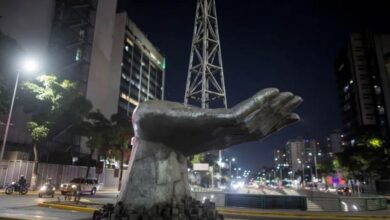The alarming rate of Latin American deforestation
According to the United Nations, 65% of the global forest area losses corresponds to Latin America and the Caribbean

The destruction of the forest area is one of the biggest Latin American concerns. Because of deforestation, environmental problems such as aridity, erosion and the loss of biodiversity caused by habitat damage, have become the headaches of Latin American leaders.
United Nations Food and Agricultural Organization (FAO) explains that Latin American and the Caribbean lost 4.7 million hectares, which corresponded to 65% of the global losses during the 2000-20005. One of the effects that most worries the experts is the loss of biodiversity, due to the natural alterations caused by humanity that increase the problems derived from climate change.
Although the Latin America problematic tends to improve, it is still concerning. According to the FAO report “State of the World’s Forests 2011 (SOFO), South America and the Caribbean reduced their rates of deforestation. In the Caribbean, it fell from 59 thousand hectares per year to 41 thousand. In relation to Central America, the deforestation indicators showed an increase in the felling of trees, going from 54 thousand hectares per year (1990-2000) to 74 thousand hectares per year (2000-2010).
For South America, the situation has been changing. For SOFO in 2011, the region stood out for the decrease in deforestation. However, the reduction was not considerable and two years later FAO calculated that South America is the region that has lost the most forest areas in the world. This is a result of the great damage that the Amazon rainforest has suffered.
Based on the data given above, the governments of the region decided to work under an environmental reason, which has helped to reduce the rate of deforestation and to mitigate the consequences. As a consequence of the joint efforts made by the UN, regional integration mechanisms, Non-Governmental Organizations (NGOs) and civil society, governments have been working to implement sustainable development on the continent based on the Sustainable Development Goals (SDGS).
As a result of the interest shown by the Latin American and the Caribbean States, there are international cooperation projects and policies that protect and work for the environment. One of the most famous measures is the national forest programs. In recent years, the number of forests designated for the conservation of biodiversity has increased, surpassing the figure of 3 million hectares.
Thus, the Latin American Network of Technical Cooperation in National Parks, Other Areas, Flora and Fauna (REDPARQUES) was established. The function of this mechanism is to promote and strengthen, through cooperation, the technical knowledge on the management of protected places.
Haiti and the Amazon the most critical places in Latin America and the Caribbean
Although the rate of deforestation is decreasing, there are areas in Latin America that increased their rate of deforestation after the 2011 SOFO report. The Amazon is one of those places where deforestation increases by periods. According to the Mighty Earth program, around 130 thousand hectares of forest were lost in the Brazilian Amazon during the 2011-2015 period.
In Peru, the scenario is not different. Between 2001 and 2015 the jungle lost an average of almost 2 million hectares in a period of 15 years. The years where more hectares were lost were 2009 and 2014. In accordance to the Monitoring Project of the Andean Amazon (MAAP), the causes of deforestation were logging, agriculture, livestock, illegal mining, infrastructure works and illicit crops.
On the other hand, Haiti has the threat of losing its native forests in a period of 10 years, due to the high rate of deforestation. United Nations Development Program (UNDP) argues that social conditions promote the felling of trees, because 70% of the population uses charcoal for cooking. It is estimated that Haiti loses annually between 15 and 20 million trees.
The truth is that Latin America and the Caribbean are privileged areas in the world in environmental matters. The natural wealth of the region deserves political protection and the establishment of measures that protect the environment and reduce the rate of deforestation in the region. The deforestation has decreased but it is still alarming.
LatinAmerican Post | Bryan Andres Murcia
Copy edited by Marcela Peñaloza





